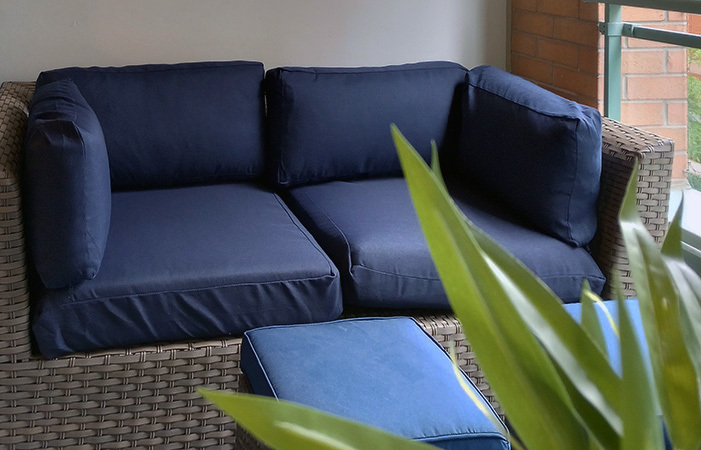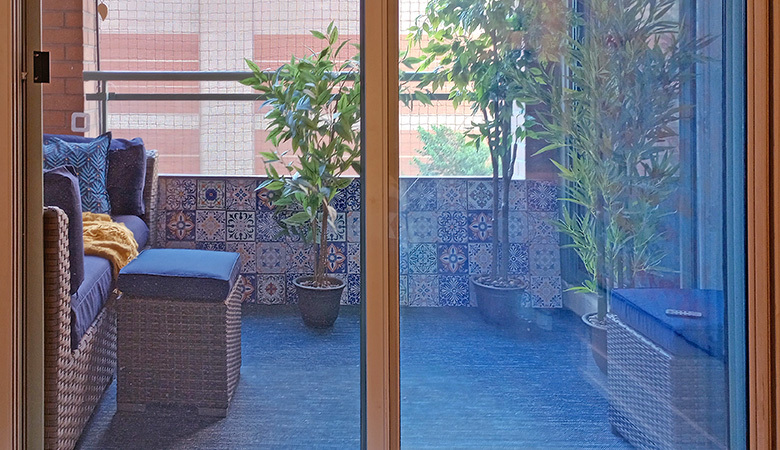For the past few weeks, when anyone asks me what I've been up to, I tell them I have been doing a project involving the balcony of my condo. I have struggled to put into words exactly what I am doing. So here is a photo essay that will, I hope, do a better job.
Although my decorating style in general tends to be on the minimalist and utilitarian side, the balcony is an exception to this. I conceived it as a sumptuous, magical space with lots of unnecessary details. I guess this small space seemed like a safe place to indulge in sensory stimulation without getting overwhelmed.
Here is the balcony in its original state. Note how dirty it is, especially the glass panels! The first thing I did was to hire a business called "Balcony Cleaners." They did a great job. The glass door was so clean that I walked into it, thinking it was open. Really! Note also the bit of wall under the glass panels. This is what will eventually be covered by my "tile wall."

The transformation begins by installing a rug and three fake trees (real plants are too high maintenance). If you look closely, you can see that one of them has little fairy lights on it. Nothing was spared!

And some furniture: a loveseat and two ottomans.

Next comes the construction of a two-foot-high wall that will cover the area below the glass panels. It is made of plywood, with 2x2s glued on to the top that are supposed to fit between the uprights between the panels. Unfortunately, I glued one of them on in the wrong place! But I was able to figure out a way to make it work. My therapist says that I shouldn't worry about getting lost because I always find myself again. I guess this is that same sort of thing.

The final step was to cover the plywood with stick-on tiles. Well, that was supposed to be the final step. Actually, in order to compensate for the gluing error, I had to cut a column of tiles off the left side of one of the boards, and attach it to the right side. I did this by backing the join with a piece of 1/8 inch fibreboard, which I bought by mistake before I realized that it was too flimsy for the purpose. So that mistake worked out, too. The
final final step was to finish the top with a small wooden shelf.

And here it is: the entire balcony as seen from the bedroom.

And here is the view from the living room. I forgot to mention the pillows I made for the couch, and the bright yellow blanket!

In addition to what you see in the picture, there are wind chimes. And I am planning to add a small table with a mosaic top. Oh, and some of those little metal bird silhouettes. This is a side of myself that I didn't know I had. Good to know, but I'm glad it is confined to this one liminal space, away from the part of the apartment that I actually live in.














